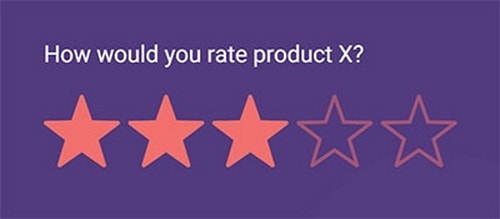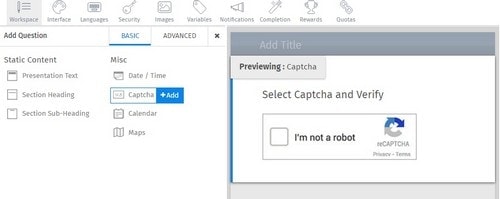A question is a sentence that seeks an answer for the purpose of collecting information for various reasons like research, a test of knowledge, or a survey. A well-structured question produces an accurate answer, which helps in collecting qualitative and quantitative data.
While collecting any information, types of questions are decided on the basis of the nature of the study, the time offered by the respondent, the willingness of participant’s participation, and the budget of the study. Asking questions is an art. Right questions can help to gain deep insights, develop effective questions, and make informed decisions.
In this article, you will learn about the different types of questions, which can be asked to produce valuable information.
Table of Contents
1) The Dichotomous questions
The dichotomous questions are generally close-ended questions. The answer to this type of question is usually either “yes” or “no”. such questions are asked for the validation of information.
Dichotomous questions can be asked to the customers of a brand to know about their experience with the service. Usually, people have a short time to answer questions after they have interacted with a brand. Therefore, this type of questions is suitable to ask in similar scenarios.
2) Multiple-choice questions
Multiple choice question is a respondent question chooses one answer out of a given list of questions. Multiple choice questions are suitable to judge the knowledge of a candidate by providing him similar incorrect options or close alternatives as one correct option.
Multiple-choice questions can be answered one more than one choice, for such questions check-box should be provided in front of each option, and for a single choice question radio button should be provided. This type of question can be asked when a merchant wants to know about the type of credit card a user uses.
3) Rank order scaling
Rank order scaling question allows the user to rank preferences in their order of choice. Such questions are used to understand the weight given by a candidate to an option. Rank order questions can be asked in drag and drop style, where a candidate can select and drags options from one column and drop to another in order of their choice.
4) Text slider
Most of you must have seen text slider questions in Instagram’s stories. This type of question is asked by providing an interactive slider, so a respondent can select the most appropriate answer. The scale is well-defined with all the possible answers. These type of questions are the best way to analyze the attitudes of respondents.
5) Likert Scale
Likert Scale question is mostly used by market researchers to assess the attitudes and opinions of their target customers. Likert Scale questions are essential to measuring the respondent’s attitude and opinions to a particular subject.
Respondent is provided with options ranging from five, seven, or nine agreement scale with a variety of statements. For instance, if a restaurant wants to know the customer’s experience with their services. Likert scale questions can be put to the respondent with options ranging from extremely disappointed to extremely satisfied.
6) Semantic differential scale
Semantic Differential questions can be asked people to rate a company, product, or service by choosing one option out of given multi-point rating options. Such questions are framed by using grammatically opposite adjectives on each end. A user can choose option close to their choice of experience either positive or negative.
7) Stapel scale
Stapel Scale question is the same as a semantic differential scale question but close-ended with one adjective at one end. Such questions contain even choices ranging from a very good experience to very poor without neutral choice. One can notice this type of questions in airplanes when an airline wants you to rate your experience of flight with them.
8) Constant Sum
Constant sum questions are the same as rate order question except the answer can be given in a numeric value. This type of questions allows the respondent to enter a numerical value for a set of variables. Constant Sum questions are best to ask when asking questions related to finance or budget-related questions or percentage-based questions.
9) Comment Box open-ended questions
Comment box open-ended questions are asked when the answers could be really long. This type of questions is suitable for collecting suggestions or feedback. Comment box open-ended questions are of open text format where respondent answers on the basis of their feelings, emotions, or knowledge. Such questions can be asked to provide justification for the prior answers.
10) Text
Text question is quite similar to comment box open-ended questions, where information is entered in a text box. The only difference between the two is that text questions require validation and are generally regulated. Text questions generally have three sub-types; such as single row text (for example name, house address), numeric textbox (only numeric values can be entered such as a mobile number), and email address (only information in email format can be entered).
11) Constant information
Constant Information questions are also open-ended questions. There are multiple rows specified with titles. Constant information questions can be used to ask basic information about like name, address, gender, age, contact number, email address, etc.
12) Demographic
Demographic questions are used to collect demographic information about the population of a demographic area. Information like gender, age, race, income, number of children, geographic places of residence, etc. can be collected using demographic questions. Information collected from the demographic questions can help you to understand a specific group of people better.
13) Matrix table
As the name suggests, Matrix table questions is arranged in a matrix with questions at the left side of the matrix and answers on the top of the matrix. Answers have multiple variants and use radio buttons to select the desired choice. However, multi-select matrix table questions use checkbox buttons to choose an answer. Another form of matrix table is used to enter text while the answering question is called a spreadsheet matrix.
14) Side-by-side matrix
Side-by-side questions can be used to get the answer of multiple aspects such as importance and satisfaction level for various services presented to customers. In side-by-side matrix questions, multiple rating options can be provided to the customer. in this way, it becomes easy for you to make changes in whatever requires improvement and also maintain services.
15) Star rating
This is a very common type of question to get feedback from the user in very little time. Instar rating questions, users are provided with an odd number of stars to display their feelings, emotions, or level of satisfaction. An odd star rating is used to account for a neutral or middle point of rating. A high number of stars means a high level of satisfaction. Star rating questions can be provided with a title on the left and stars on the right.
16) Max Diff
Max Diff questions, users are given various attributes and are asked to rate the best and worst attributes. Users can either choose best or worst, but can’t choose both options simultaneously. For instance, max diff questions can be used, when a bank wants its customers to rate services of a payment merchant
17) Push to social
Push to social questions is used to post reviews or feedbacks on social platforms like Facebook, Google+, and Twitter, etc. Using these questions is the best way to create a positive vibe about a brand on a social media platform. Push to a social question is the best way to analyze users’ level of satisfaction. Otherwise, such questions can be used to collect and address negative feedback from customers.
18) Visual analogue
A visual analogue question is a close-ended question. Feedback from such questions can be obtained in two ways- thumbs up/thumbs down or odd-point smiley question. In thumbs up/thumbs down questions, respondents can indicate a level of satisfaction either in positive or in a negative way.
In add-point smiley questions, a user is presented with smileys representing various levels of satisfaction. This technique also indicates a neutral response. This visual analogue questions has a maximum response rate because of its graphic representation.
19) Image
Image question, the respondent is presented with multiple images. This method has a maximum response rate because it allows a user to click on an image to answer the question. For example, images of different flavors of ice-cream can be given to ask respondents about their favorite flavor.
20) Net promoter score
Net promoter score questions (NPS) are sent to respondents to get a concise understanding of their level of satisfaction with a product or service of an organization. These questions can be answered on a scale of 0-10, which provides a simple and effective way to measure the popularity of a brand or business. Respondents can be categorized into three categories such as Detractors (who give ratings between 0-6), Passives (who give a rating between 7-8), promoters (who give a rating between 9-10).
21) Van Westendorp Sensitivity- price-sensitive questions
It is a technique used by market researchers to evaluate consumers’ opinions or views about the value of product or service. This technique is highly effective to tweak the price and offering.
22) Date/time
Date/time question is asked to a respondent to enter information in the form of date and time. For example, the respondent can be asked to input their date of birth.
23) CAPTCHA
CAPTCHA questions is used to limit the number of deceptive responses for a survey.
24) Calendar
Calendar questions ask a user to enter date and time information in a calendar format.
25) Interactive map
Interactive map questions allows a user to click on a map by clicking on a location on an interactive map. Interactive map questions to ask the respondent to click on the city of users’ city of birth.
26) Reference data
Reference data questions are used to validate the zip codes against those which are in the database for a country. Respondents can enter their zip code in the answer space to check the validity of the zip code.
27) Lookup table
Lookup table questions offers to autocomplete in a systematic way. It is a mixture of drop-down and single-line editable boxes. This type of questions is used when there are many options to choose from.
28) Store locator
Store locator questions help to find a nearby store in a particular area for business purposes.
29) TubePulse
TubePulse questions permits respondents to participate in a discussion about a certain topic. These questions are provided with a video to collect feedback.
Liked this post? Check out the complete series on Careers






Thank you.